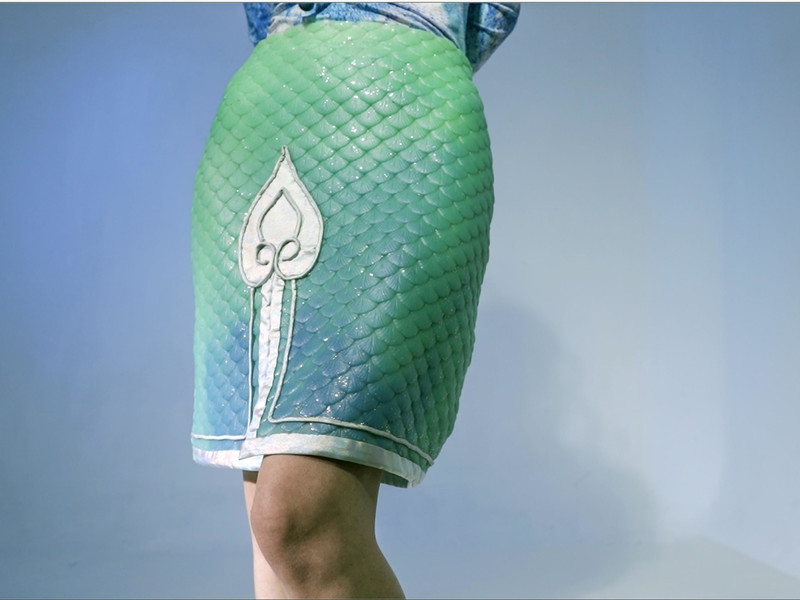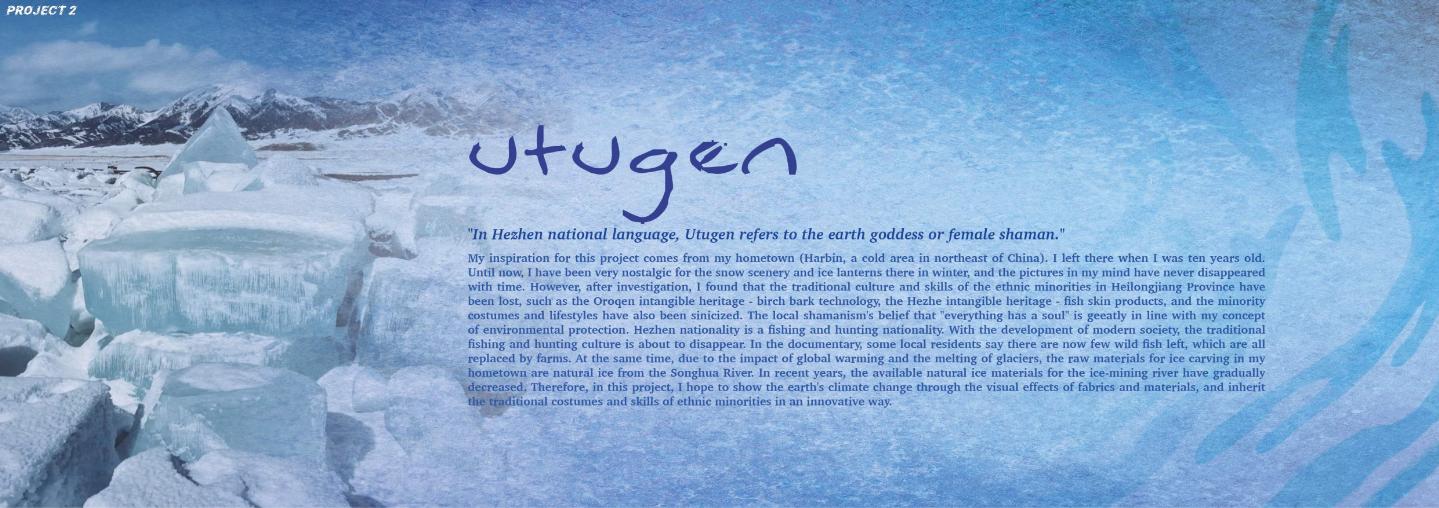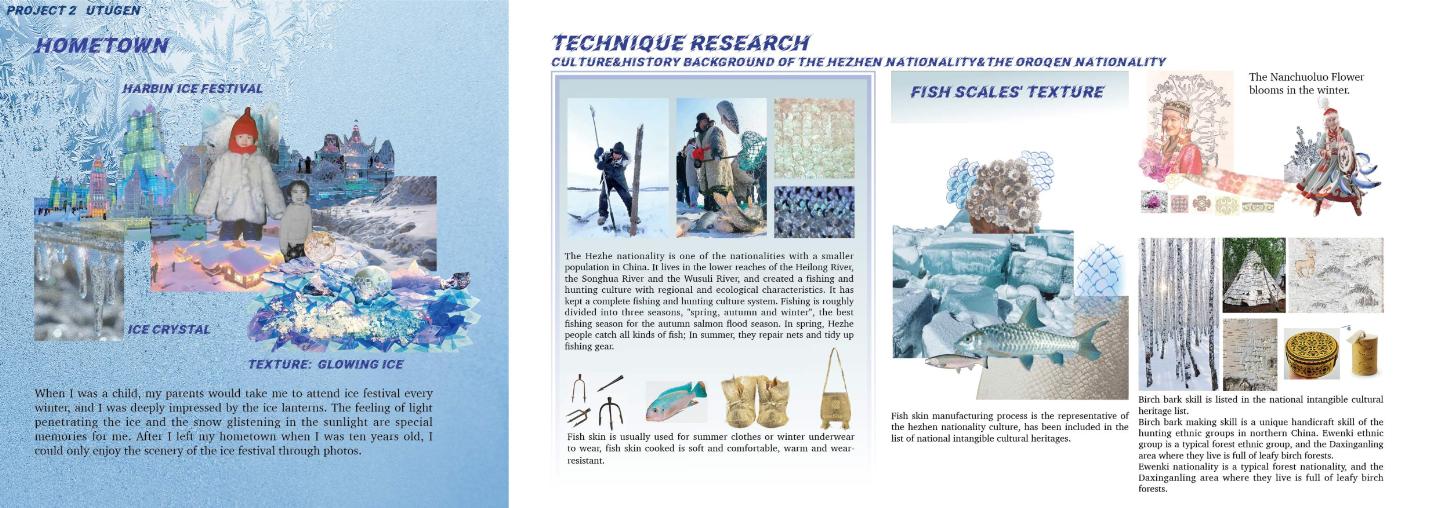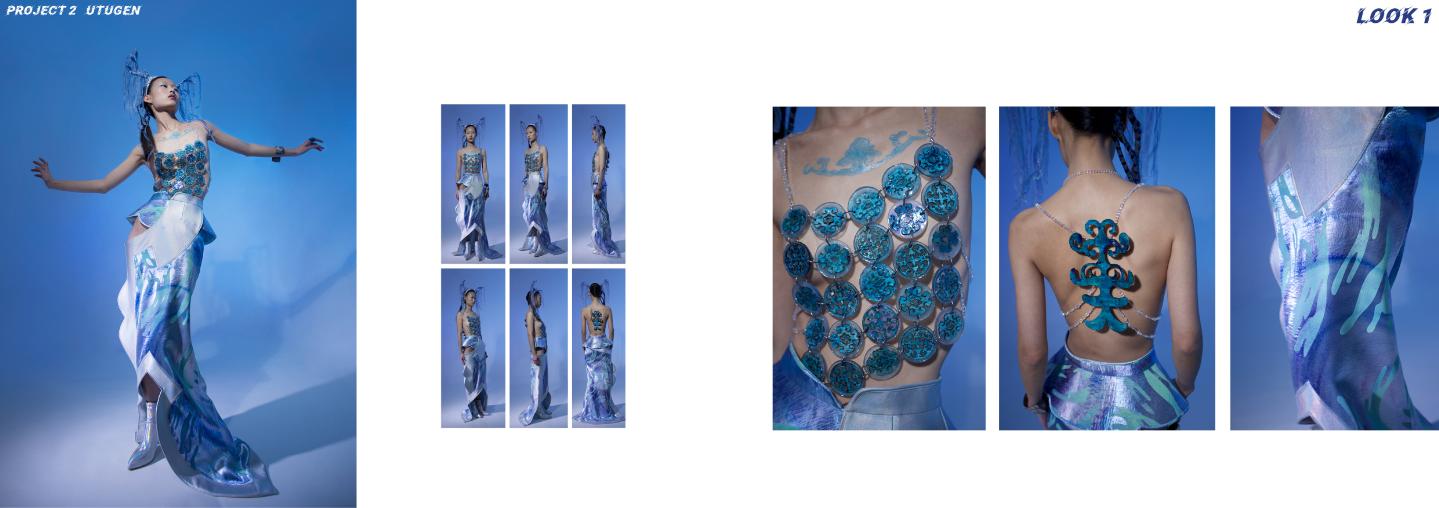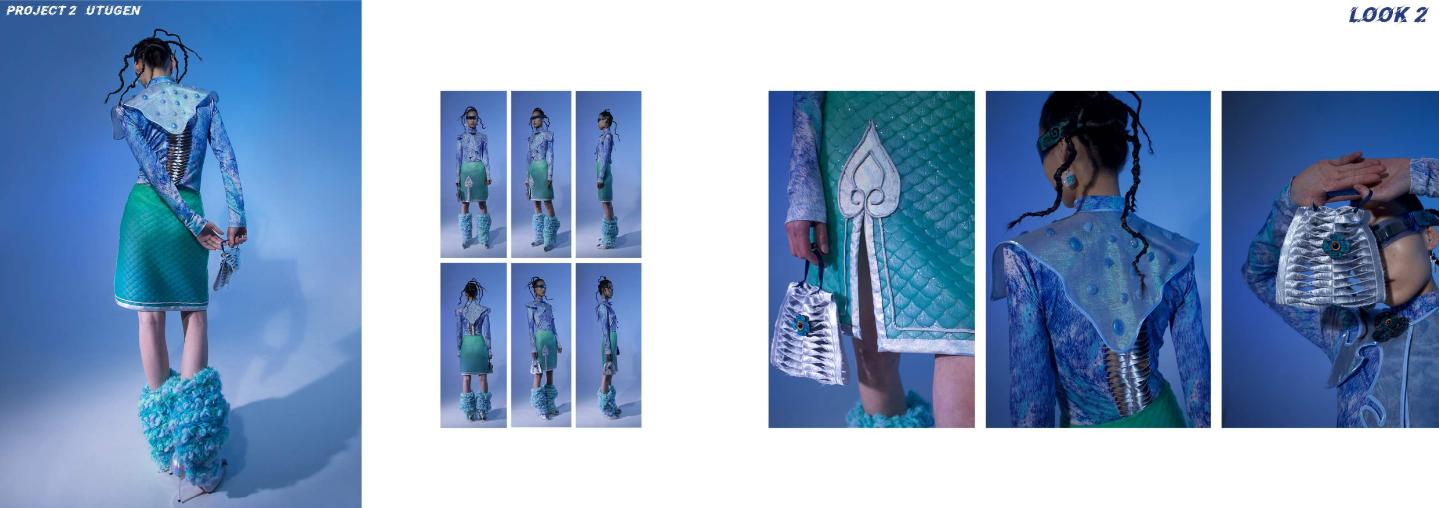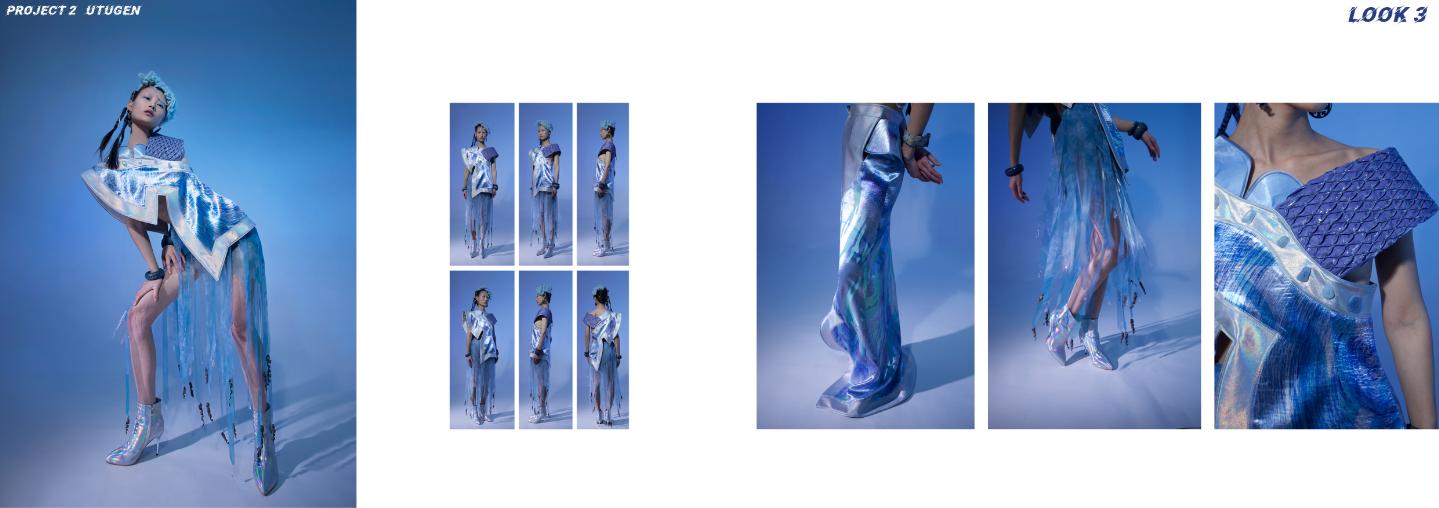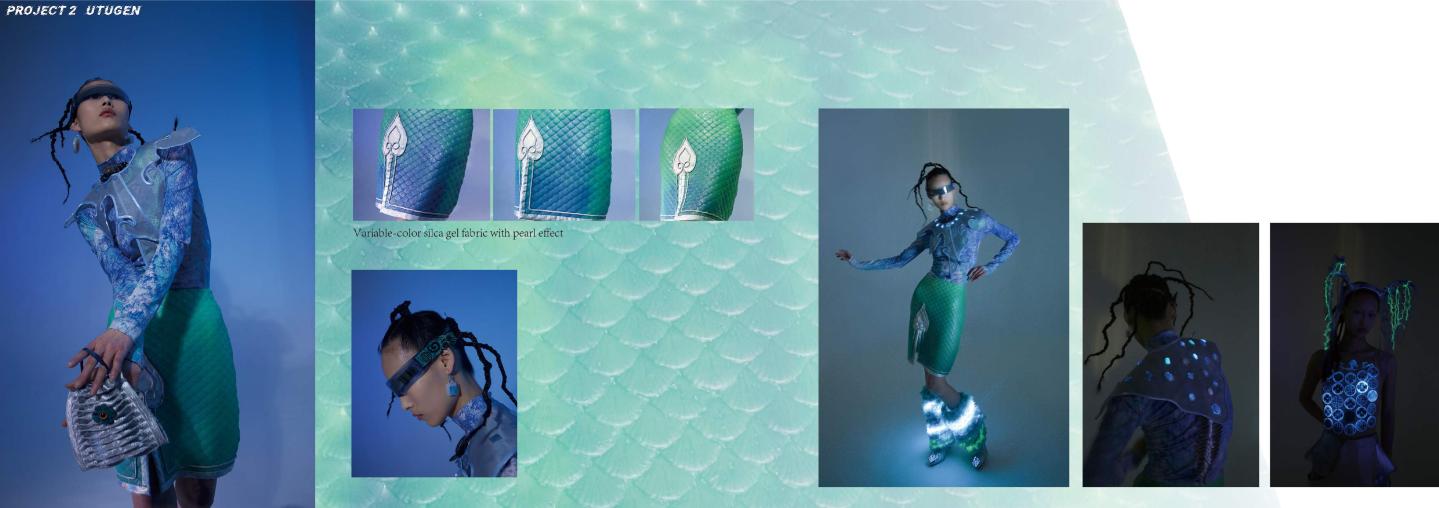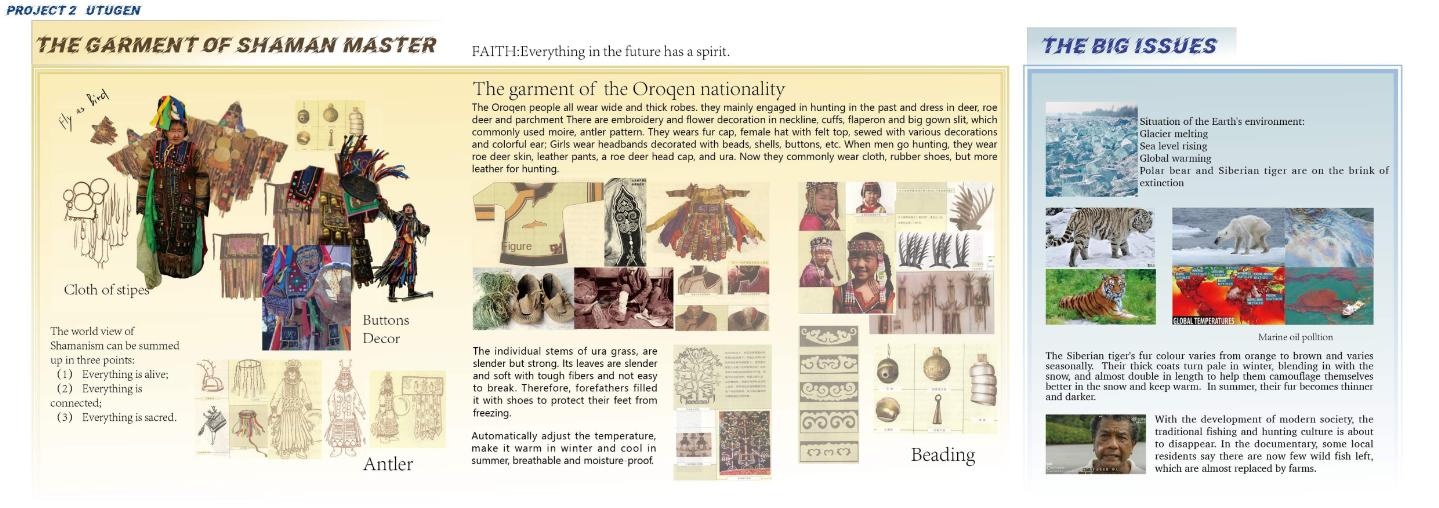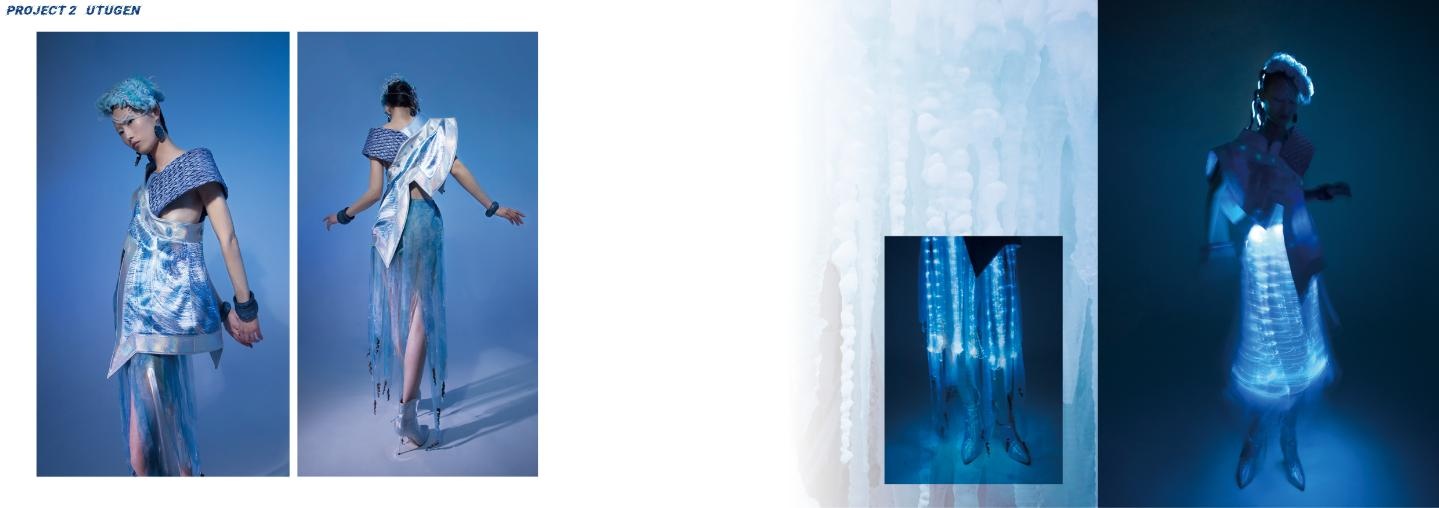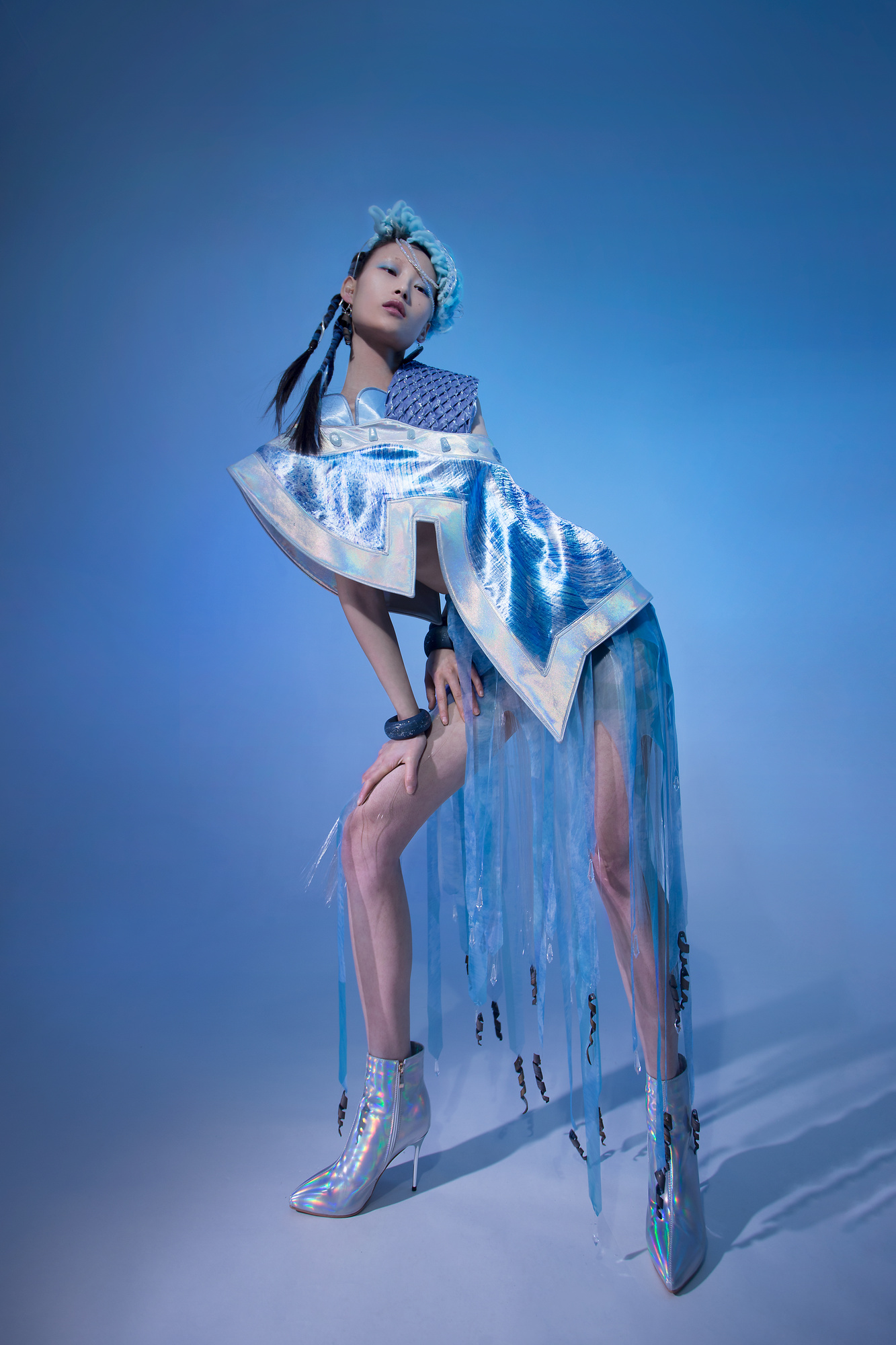utugen-Entry

Look1
Material: birch bark, temperature change fabric
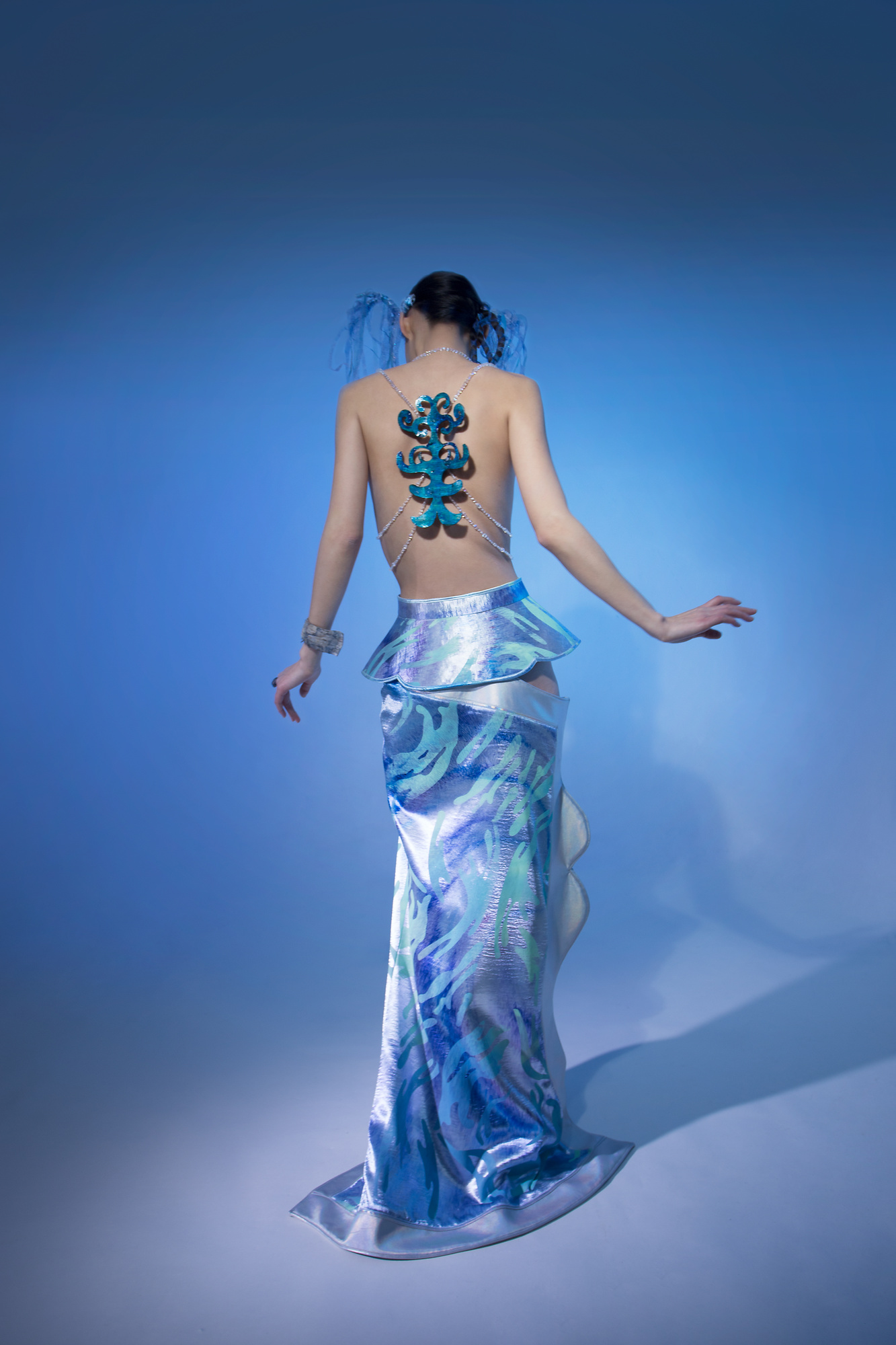
Look1
Material: birch bark, temperature change fabric

Look2
Material: birch bark, temperature change fabric, optical fiber
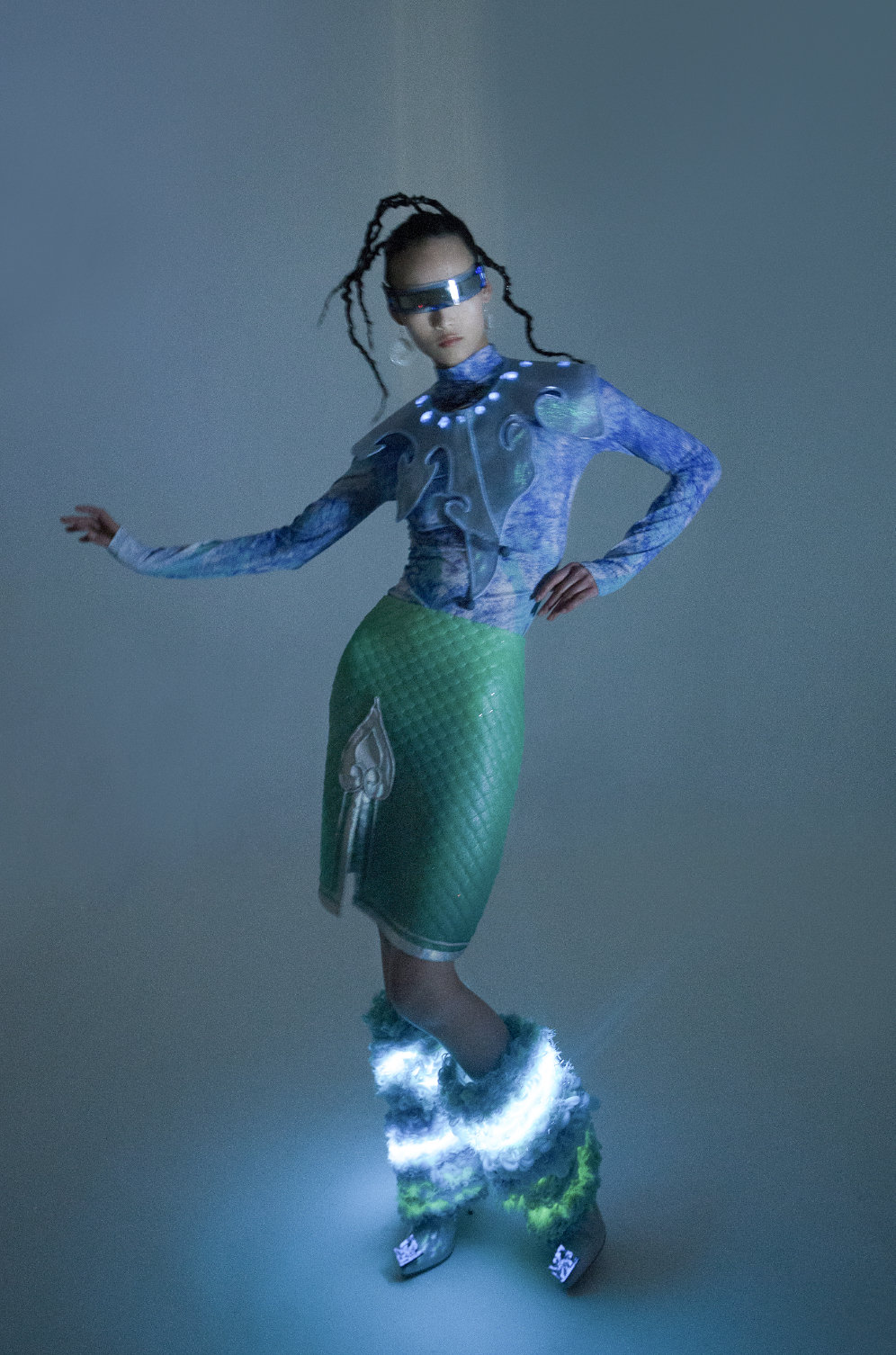
Look3
Material: silicone temperature change fabric, printed fabric, optical fiber, birch bark
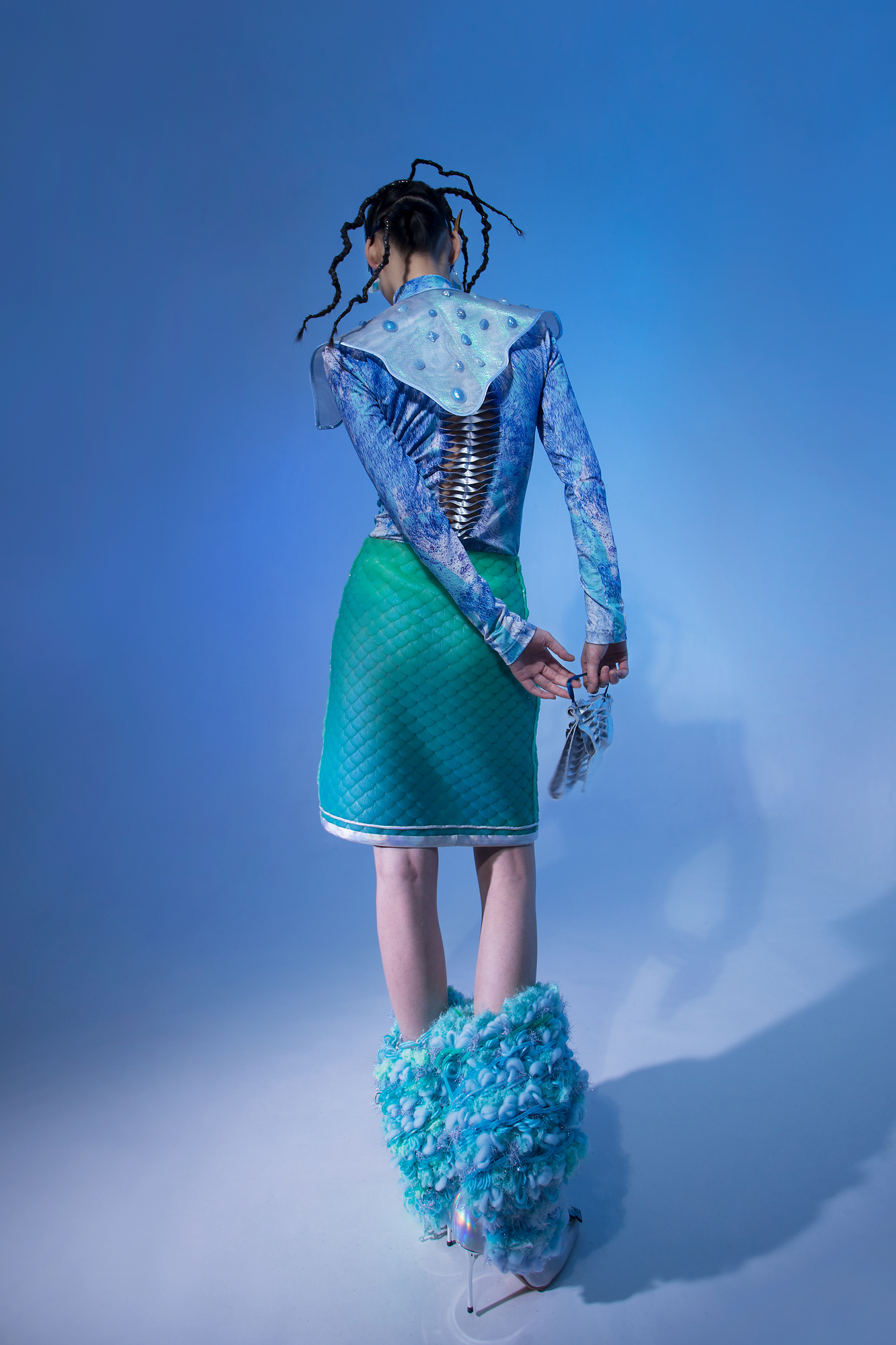
Look3
Material: silicone temperature change fabric, printed fabric, optical fiber, birch bark
In this project, I try to pass on the intangible cultural heritage skills of the endangered Chinese Hezhe and Oroqen ethnic groups and the traditional costumes of ethnic minorities in a more innovative and environmentally friendly way.
This project was inspired by my hometown of Harbin, a cold region in Northeast China. I left there when I was ten. Until now, I have always missed the snow and ice lanterns there in winter. However, after investigation, I found that the traditional culture and skills of the ethnic minorities in Heilongjiang Province have been lost, such as the Oroqen intangible heritage-birch bark craft, the Hezhe intangible heritage-fish skin products, and the ethnic minorities' costumes and lifestyles have also been sinicized. The local shamanic belief that "everything has a soul" is very much in line with my environmental philosophy. The Hezhe is a fishing and hunting nation. With the development of modern society, the traditional fishing and hunting culture is about to disappear. In the documentary, some local residents said that there are few wild fish left and they have been replaced by farms. The raw material for ice sculpture in my hometown is natural ice from the Songhua River. However, in recent years, due to the impact of global warming and melting glaciers, the natural ice materials that can be used for glacier mining have gradually decreased. Therefore, in this project, I hope to show the climate change of the earth through the temperature change of fabrics and materials and the visual effects such as luminescence, and inherit the traditional costumes and intangible cultural heritage crafts of ethnic minorities in an innovative and sustainable way. Through a large number of material experiments, I made the fabrics of this group of garments realize the characteristics of discoloration after contacting the human body. I used a temperature-varying fabric made of silicone material to simulate fish skin clothing, and discarded birch bark leftover materials collected from the factory were made into accessories.
I am a textile and clothing designer. Graduated from the Royal College of Art, majoring in textiles, and graduated from Kingston University, majoring in fashion design. I have rich experience in original design, committed to sustainable design and the inheritance and innovation of traditional Chinese minority culture and intangible cultural heritage.







